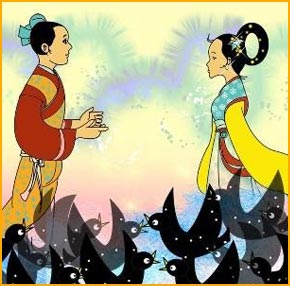Chinese characters can seem very confusing at first. But characters have a logic of their own, revealing clues about definition and pronunciation. Once you learn more about the elements of characters, the logic behind them begins to emerge.

Why Are Radicals Important?
The building blocks of Chinese characters are radicals. Almost all Chinese characters are composed of at least one radical.
Traditionally, Chinese dictionaries were classified by radicals, and many modern dictionaries still use this method for looking up characters. Other classification methods used in dictionaries include phonetics and the number of strokes used for drawing characters.
Besides their usefulness for categorizing characters, radicals also provide clues for meaning and pronunciation. This is particularly useful when characters also have a related theme. For example, most characters having to do with water or moisture all share the radical 水 (shuǐ). The radical 水 on its own is also a Chinese character, which translates to "water."
Some radicals have more than one form. The radical 水 (shuǐ), for example, can also be written as 氵 when it is used as part of another character. This radical is called 三点水 (sān diǎn shuǐ), which means "three drops of water" as, indeed, the radical looks like three droplets. These alternate forms are rarely used independently since they do not stand as Chinese characters on their own. Therefore, radicals can be a useful tool for remembering the meaning of Chinese characters.
Here are a few examples of characters based on the radical 水 (shuǐ):
氾 – fàn – overflow; flood
汁 – zhī – juice; fluid
汍 – wán – weep; shed tears
汗 – hàn – perspiration
江 – jiāng – river
Characters can be composed of more than one radical. When multiple radicals are used, one radical is typically used to hint at the definition of the word while the other radical hints at the pronunciation. For example:
汗 – hàn – perspiration
The radical 水 (shuǐ) implies that 汗 has something to do with water, which makes sense because perspiration is wet. The sound of the character is provided by the other element. 干 (gàn) on its own is the Chinese character for "dry." But "gàn" and "hàn" sound very similar.
Types of Characters
There are different types of Chinese characters: pictographs, ideographs, composites, phonetic loans, radical phonetic compounds.
Pictographs
The earliest forms of Chinese writing originate from pictographs. Pictographs are simple diagrams meant to represent objects. Examples of pictographs include:
日 – rì – sun
山 – shān – mountain
雨 – yǔ – rain
人 – rén – person
These examples are modern forms of pictographs, which are quite stylized. But the early forms clearly show the objects they represent.
Ideographs
Ideographs are characters which represent an idea or concept. Examples of ideographs include 一 (yī), 二 (èr), 三 (sān), which means one, two, three. Other ideographs include 上 ( shàng) which means up and 下 (xià) which means down.
Composites
Composites are formed by combining two or more pictographs or ideographs. Their meanings are often implied by the associations of these elements. Some examples of composites include:
好 – hǎo – good. This character combines woman (女) with child (子).
森 – sēn – forest. This character combines three trees (木) to make a forest.
Phonetic Loans
As Chinese characters evolved over time, some of the original characters were used (or loaned) to represent words that had the same sound but different meanings. As these characters took on a new meaning, new characters representing the original meaning were devised. Here is an example:
北 - běi
This character originally meant “the back (of the body)” and was pronounced bèi. Over time, this Chinese character has come to mean "north." Today, the Chinese word for "back (of the body)" is now represented by the character 背 (bèi) .
Radical Phonetic Compounds
These are characters which combine phonetic components with semantic components. These represent approximately 80 percent of modern Chinese characters.
You have already seen examples of radical phonetic compounds as discussed earlier.
Credit: mandarinmorning




